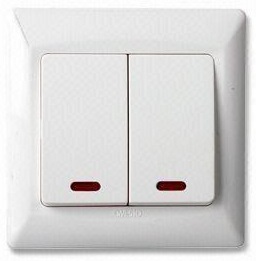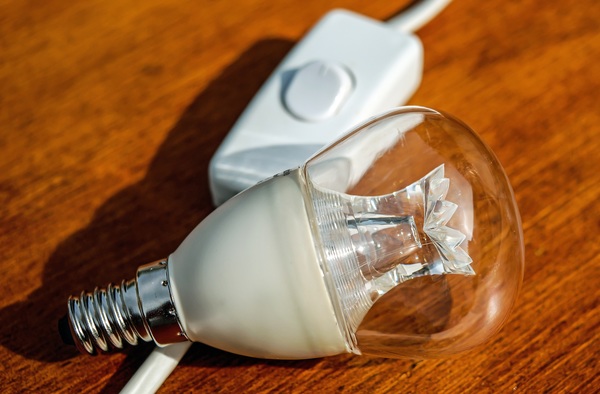It goes without saying that a fairly common query when replacing conventional lighting with LEDs is, why are there occasions when the LED bulb stays partly lit or flickers. This has nothing to do with the quality of the product and certainly does not reflect a problem with the bulb itself. The most common causes and possible solutions will be analysed below (if the lighting that malfunctions is dimmable, it may be interesting to review this article, as well as if the light flickers when it is switched on).
Switches with indicator lights
It is quite common to find switches with a indicator light, usually a red neon light, which illuminates when the light is switched off. This makes it easy to find the switch in the dark. The disadvantage is that it is installed in parallel to the switch, causing a small electrical current to pass through which, although it has no effect on the behaviour of the bulb being replaced, it is however enough for the LED to light up minimally.

If this subtle amount of light is bothersome, there are a number of things one can do:
- Remove the neon light or directly replace the switch with a standard switch.
- Install a resistor in parallel to the bulb, so that the current will not flow to the bulb causing it to shut off completely.
- Leave the 12V transformer connected, only if you are replacing 12V halogen lamps with LEDs operating at 230V.
Incorrectly installed switch
As it is known, the electrical installation of a house is made up of three wires (live, neutral and earth). The switches must cut the live, or live and neutral simultaneously (double pole switches). The problem arises when this installation is not carried out correctly and the switch is operating on the neutral. When this happens, small current drifts can occur that are sufficient enough to cause LED bulbs to light up, even partially.
If the previous lights were connected to a presence detector it may be that the wiring failure is in this component.
Neutral return current
If any household appliances generate return currents through the neutral, this minimal amount of current would be sufficient enought to switch on the LEDs. Although this is a rare occurrence, the only solution available is to replace the switches with ones that cut off the live and neutral simultaneously.

Worn or dirty switch
Either through heavy use or use over time, the switch connectors become worn or clogged with dirt. This can cause a slight short-circuit which allows a small part of the electrical current to pass through. The switch should be disassembled and cleaned thoroughly. If the problem persists replace it with a new one.
As you can see, it’s not always necessary to call in the troops to fix issues with LED bulbs that remain lit. In fact, in most cases, it’s not even necessary to call in an electrician.

